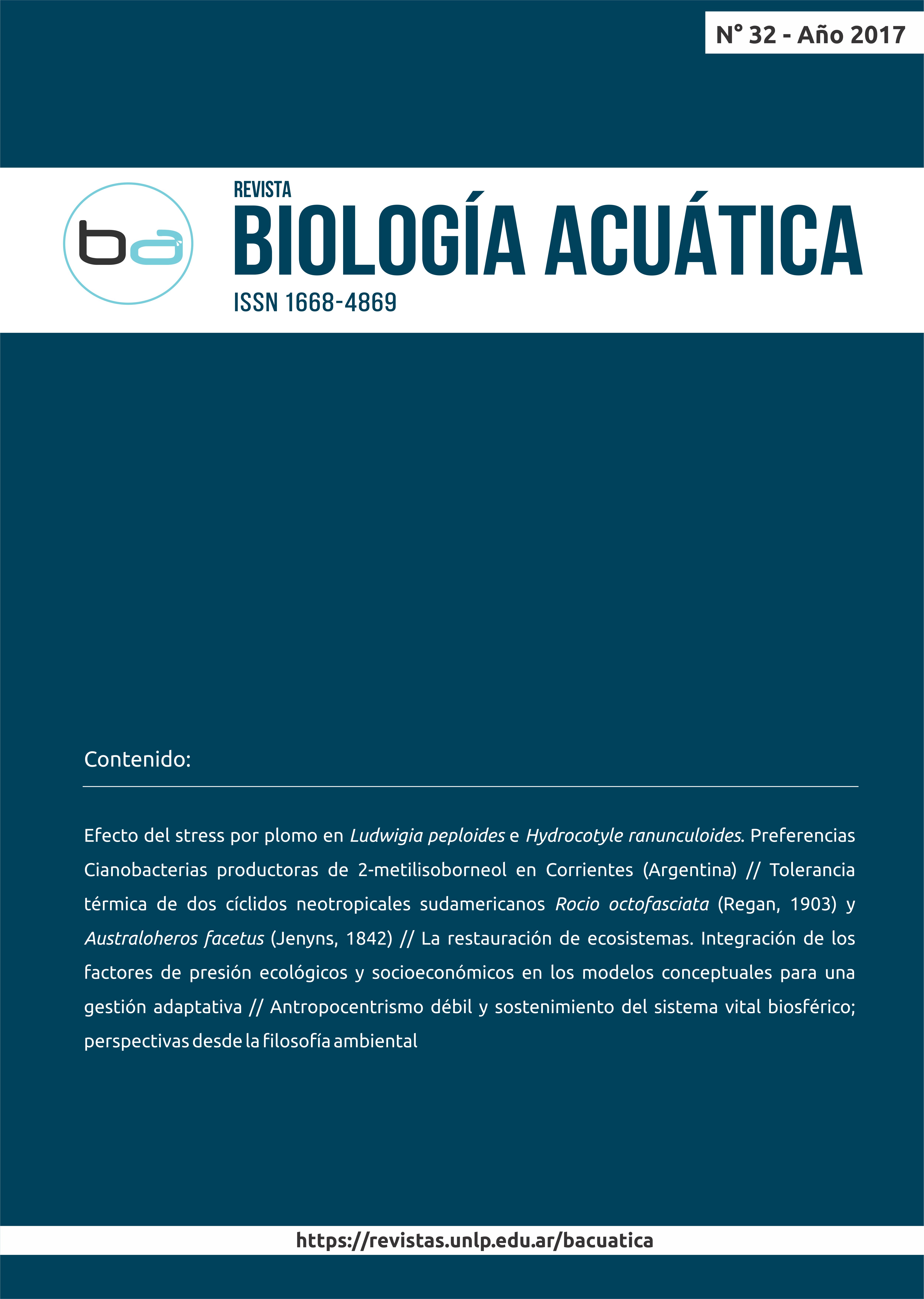Cianobacterias productoras de 2-metilisoborneol en Corrientes (Argentina)
Keywords:
Odour metabolites, Planktothricoides raciborskii, Uruguay River, drinking water, activated carbonAbstract
The Uruguay River is a source of drinking water for the city of Paso de Los Libres (Corrientes, Argentina). Potentially harmful cyanobacteria, sometimes forming blooms, have been detected since the year 2008. Weekly water samples from Uruguay River at Paso de Los Libres were analyzed from May 2006 to assess water quality for drinking water supply. Besides, samples from water intake of the water treatment plant of Paso de los Libres and surface water samples from Stream Yatay, a tributary of Uruguay River upstream Paso de los Libres, were studied on March 2012 due to the presence of tastes and odors. Phytoplankton species were identified and quantified. Mouse bioassays and microcystins analysis by ELISA method were performed on raw water from Uruguay River, and geosmin and 2-methylisoborneol content in raw water and in drinking water were analyzed by GC-MS. Samples from Yatay stream were cultured in BG11 medium without nitrate. A bloom of Planktothricoides raciborskii (Woloszynska) Suda & Watanabe was registered in Yatay stream on March 2012, together with low abundances of Dolichospermum helicoideum (Bernard) Wacklin, Hoffmann & Komárek. High levels of 2-methylisoborneol were detected in raw water, and powdered activated carbon was applied to remove odour and taste compounds. Mouse bioassays and microcystins analysis were negative. Planktothricoides raciborskii and D. helicoideum are rare tropical species, and they are new records for Argentina.





















